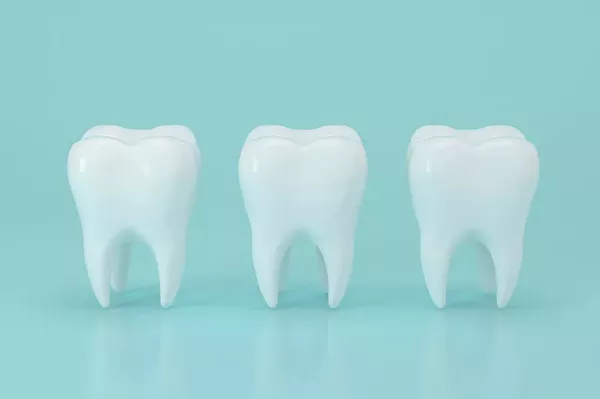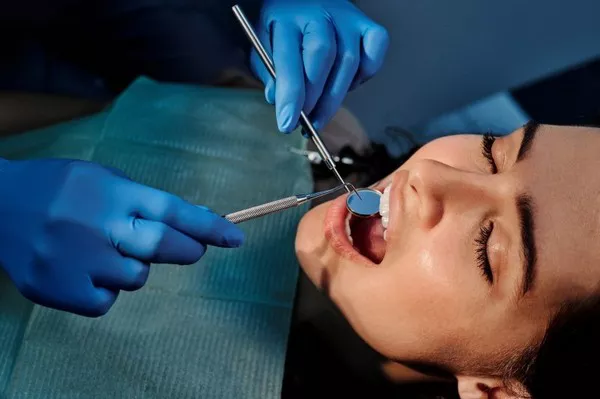Maintaining good oral health is crucial for overall well-being, and one aspect of this is staying vigilant about the condition of your teeth. While regular brushing and flossing are essential, sometimes cavities can still form, requiring fillings to prevent further decay. Knowing when you might need fillings can help you address dental issues promptly and maintain a healthy smile. Here’s how to tell if you need fillings:
Tooth Pain: One of the most common signs that you may need a filling is experiencing tooth pain. This pain can vary in intensity from mild discomfort to sharp, shooting pains, especially when biting down or consuming hot or cold foods and beverages. If you notice persistent or worsening tooth pain, it’s essential to consult with your dentist as soon as possible.
Visible Holes or Pits: Inspect your teeth regularly for any visible signs of decay, such as small holes or pits on the surface. These can indicate the presence of cavities that may require filling. Use a mirror to check all surfaces of your teeth, paying close attention to the molars and premolars, as these are more prone to decay due to their rough surfaces and deeper grooves.
Sensitivity to Sweets: Sensitivity to sugary foods or drinks can be a sign of tooth decay and the need for fillings. If you experience discomfort or pain when consuming sweets, it could indicate that the enamel on your teeth has been compromised, exposing the sensitive inner layers to the sugar. This sensitivity may also extend to acidic foods and beverages.
Pain When Eating or Drinking: If you feel pain or discomfort when eating or drinking, especially when chewing on certain foods, it could be a sign of a cavity that requires filling. This pain may be localized to a specific tooth or area of your mouth and may worsen over time if left untreated.
Dark Spots or Discoloration: Dark spots or discoloration on the surface of your teeth can indicate the presence of decay and the need for fillings. These spots may appear brown, black, or gray and are often a sign that bacteria have penetrated the enamel and reached the dentin layer beneath. If you notice any unusual discoloration on your teeth, schedule a dental examination promptly.
Bad Breath: Persistent bad breath, also known as halitosis, can sometimes be linked to dental issues such as cavities that require fillings. Bacteria that accumulate in cavities and decayed teeth can produce foul-smelling gases, leading to chronic bad breath. If you experience persistent bad breath despite practicing good oral hygiene, it’s essential to have your teeth examined by a dentist.
Swelling or Pus: In advanced cases of tooth decay, you may experience swelling or the formation of pus around the affected tooth. This indicates an infection that has spread beyond the enamel and into the surrounding tissues, potentially requiring more extensive treatment such as a root canal in addition to fillings. Swelling or pus should be addressed promptly to prevent further complications.
Increased Tooth Sensitivity: Heightened sensitivity to hot, cold, or pressure can be a sign of dental issues such as cavities. If you notice that your teeth have become more sensitive than usual, it’s essential to have them evaluated by a dentist to determine the underlying cause and whether fillings are necessary.
Visible Fractures or Chips: Visible fractures or chips in your teeth can create openings where bacteria can enter and cause decay. Even if the damage seems minor, it’s crucial to have it examined by a dentist to determine whether fillings or other restorative treatments are needed to prevent further deterioration.
Previous Fillings Need Replacement: If you have previously had fillings placed and notice any signs of deterioration, such as cracks, leakage, or sensitivity, it may be time to have them replaced. Over time, fillings can wear down or become damaged, allowing bacteria to re-enter the tooth and cause decay. Regular dental check-ups can help detect any issues with existing fillings early on.
Conclusion:
Maintaining good oral hygiene and staying vigilant for signs of tooth decay are essential for preventing the need for fillings. By paying attention to symptoms such as tooth pain, sensitivity, discoloration, and visible damage, you can identify cavities early and seek prompt treatment from your dentist. Remember to schedule regular dental check-ups to monitor the health of your teeth and address any issues before they worsen. With proper care and attention, you can keep your smile healthy and avoid the need for extensive dental work.
Why Is Tooth Sensitive After Filling
Can An Old Filling Cause Tooth Pain
How Long After Amalgam Filling Can I Eat






























